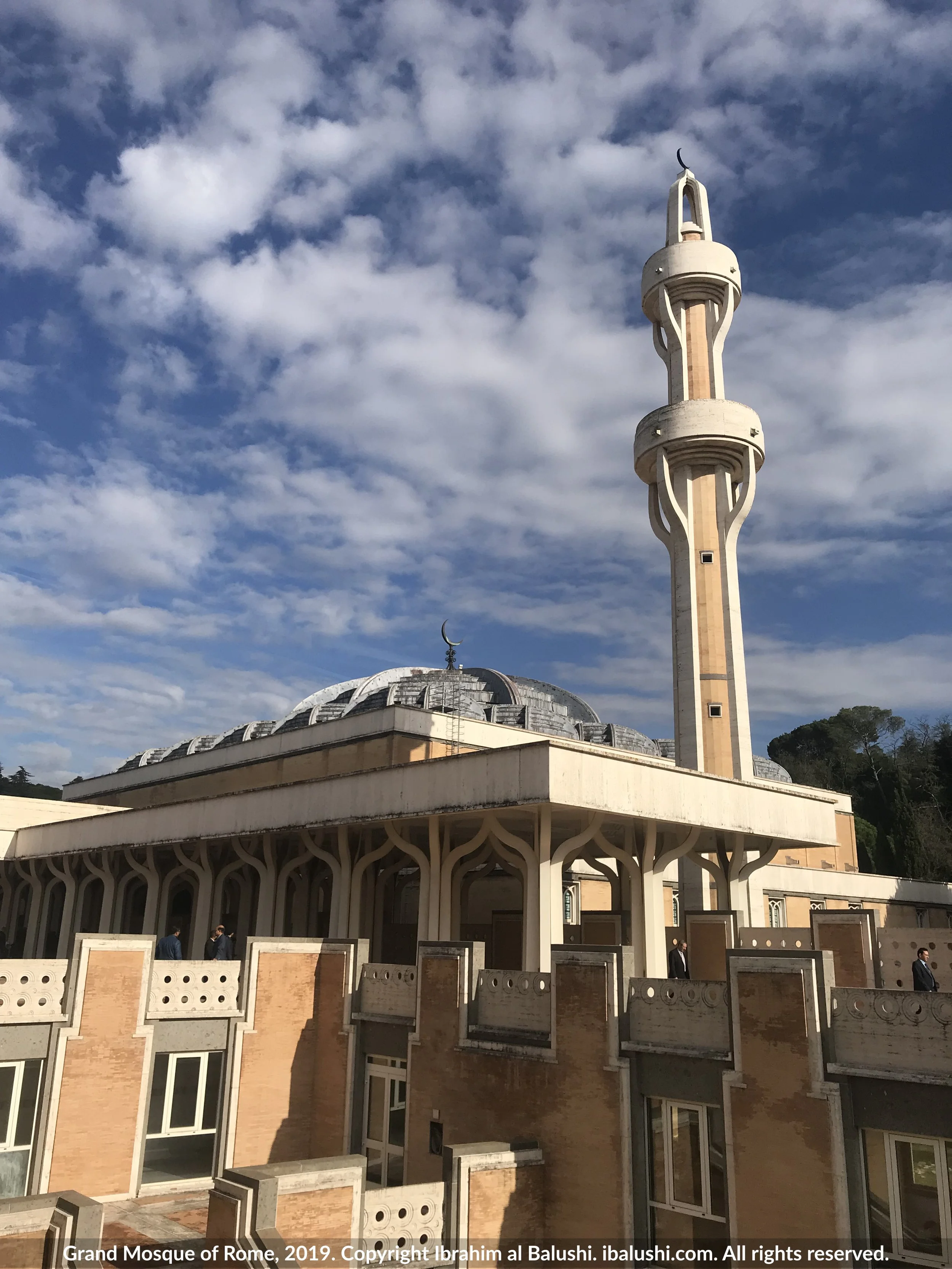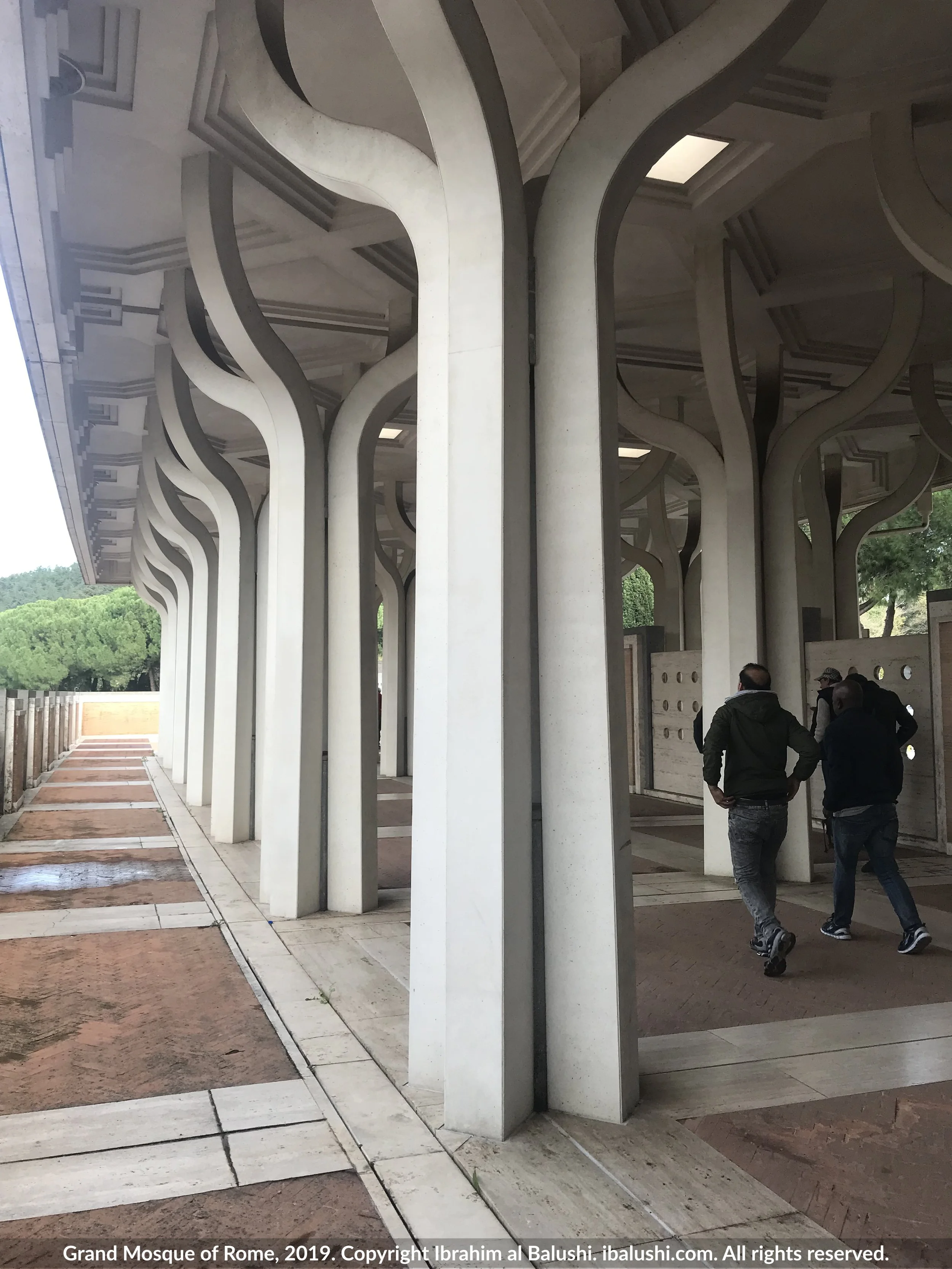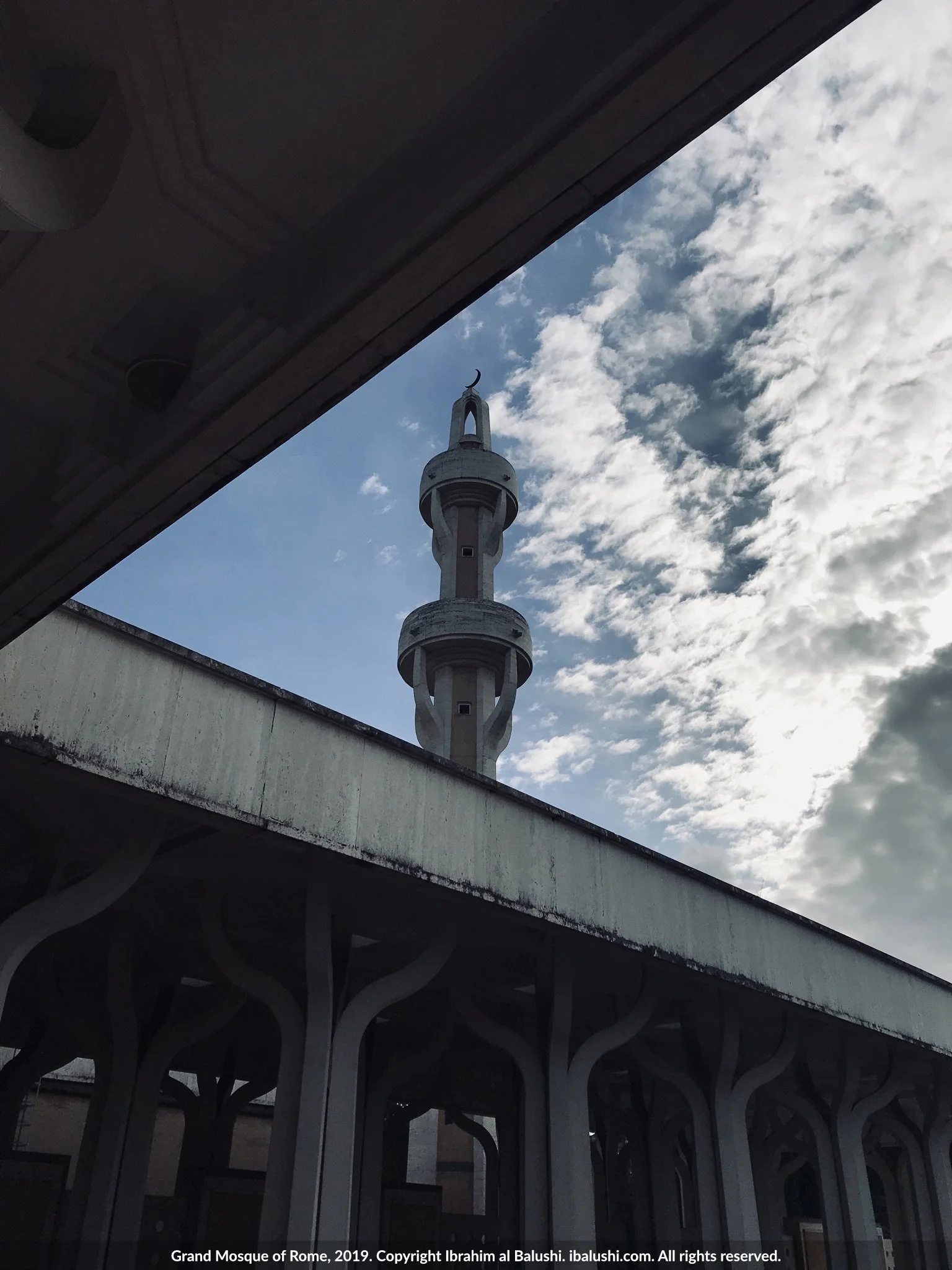The inspiration of Ghorman in Andor: Rome’s Grand Mosque
I didn’t expect to see somewhere I visited regularly to be in one of my favourite series of a galaxy far far away. Based on the universe of Star Wars, specifically in the city of Ghroman, where the story unfolds of a city/plan starting resistance against their occupier (The Empire).
While the city in general represents Medieval Italian vernacular architecture, with its soft arches and cobbled streets, while the living quarters has influences of Hausssmann’s renovating and uniforming of Paris and the art nouveau architecture movement in the late 1800s. When the series panned to the Ghorman plaza, the centerpiece of the show, I was struck with a feeling of familiarity. I had to pause the show and look online if anyone else noticed the existence of it, yet none of the Star Wars architecture review connected the place I know by heart to Ghorman plaza; it takes direct inspiration from the Grand Mosque of Rome. I know as I have been going there regularly every Friday for prayer, back when I used to live in Rome in 2019.
The Architecture
Co-designed by Iraqi architect Sami Mousawi and Italian architects Paolo Protoghesi and Vittorio Gigliotti, the Grand Mosque of Rome is Western Europe’s largest mosque, and the beauty of it was the intentional design of combining Roman elements into the creation of a modernist mosque; through the use of stucco and travertino, while featuring abstract Islamic architectural elements, glazed moroccan tiles, with geometric-designed Persian carpet and the unique tree-like arch columns that inspired Ghorman’s plaza columns. These columns extend the exterior of the structure towards the inside, as a forest of trees. An important element and parable use in the Quran for good deeds and good words:
{Do you not see how Allah compares a good word to a good tree? Its root is firm and its branches reach the sky, ˹always˺ yielding its fruit in every season by the Will of its Lord. This is how Allah sets forth parables for the people, so perhaps they will be mindful} [Quran 14:24-25].
I love the architecture of this mosque as it follows the pure essence of Islam of reflecting the indigenous culture in an Islamic element.
The Story of Rome’s Grand Mosque
Despite its size, the mosque is well hidden, perhaps intentionally, among the trees and a quiet neighborhood on a hill. The site is located in a triangular space under the foothills of a middle-class neighborhood, far from the city’s bustle. While the suggestion of a Mosque to be built in Rome has been answered with refusal since the 1920’s, the Pope only awarded the Muslim community the mosque in 1959, on a space that was an old dumping ground. I found it remarkable how similar its formation is to Al-Aqsa Mosque, which was also once a dump site that Umar cleaned with his own hands.
Later, a Vatican decree issued in 1963 had declared that it would not oppose the construction of a mosque in Rome on condition that this mosque be located out of sight of St. Peter’s Basilica, and that its minaret not to be taller than the St Peter’s Dome. As a result of this declaration, the Islamic Cultural Centre was founded in 1966 based on a presidential decree. And in 1972, initiatives to build the mosque were agreed and were funded by the head of 23 muslim countries, signified by a plaque outside of the mosque. The mosque's construction took around 20 years and formally opened in 1994.
Exiting the main hallway towards the tranquil courtyard and towering tree-arches, I realized the diverse Islamic fabric of the congregation. Unlike other cities with dominant immigrant origins, Rome's Muslim community was diverse, it included Ethiopians, Libyans, South Asians, and Albanians, reflecting Italy's colonial past, as well as recent immigration of Egyptians and Bangladeshi immigrants. With around a population of 100,000, Muslims form the second-largest religious community after Catholic Christians, even surpassing the Orthodox community. I also found it beautiful how Muslim women wearing hijabs blend almost seamlessly with fully covered nuns in the streets and depictions of Mary in the churches.
Islamic influence on Italy
Living in Italy, I appreciated their long standing relationship with Muslims and Mediterranean cultures. Earlier, many Arabs and North Africans once stood as senates and caesars in the Roman Empire, notably Philip the Arab, the first Christian emperor. Then since the early 9th century, the Italian peninsula had a constant Muslim presence, where Muslims established the Emirate of Sicily, a multilingual and multi-religious trading hub that remained diverse and rich even during early Norman times, developing later to a distinct Arab-Byzantine culture.
This past influence persists in many aspects of the modern Italian life, first in the language, the Sicilian dialect is heavily influenced with vocabulary from Arabic terms, and in the nearby island nation of Malta, the sicilian arabic evolved towards the Maltese, the only Semitic language in Europe. Many sweet and food influences of the Sicilian cuisines finds its roots in the Arabic cuisine, such as cannoli and arancini.
While in cuisine, pasta, in its modern form, was introduced from durum wheat by Arab traders in the 9th century, who themselves were introduced to it from Persian/Central Asian cultures. And gelato, the Italian ice cream, was initially influenced by "sherbet," a sugary syrup mixed with ice, found it’s way from Ottoman courts.
In the 1700s, coffee found it’s way into Rome and Italy also via the Ottoman Empire. At first, Christians regarded it as a sin to drink this “Islamic beverage”, until it was showcased before Pope Clement VIII by his advisers to publicly denounce it, where he instead, after drinking it, stunned his advisers by approving and blessing it. Coffee culture then grew rapidly, first at the North in Venezia where the first cafe “Caffè Florian” opened in 1720, then reaching Rome around 1760 with the cafe “Caffè Greco”.
The memories of this place always hold a deep place of love in my heart, and I am glad Andor, alongside its beautiful storyline, touches this personal and memorable experience.
Sources“Islamic Cultural Center of Italy Grand Mosque of Rome.” Mosqpedia.org, Abdullatif Al Fozan Award for Mosque Architecture, mosqpedia.org/en/mosque/285. Accessed 15 May 2024.“Mosque and Islamic Cultural Center (Rome, Italy).” Www.archnet.org, ARCHNET, www.archnet.org/sites/825. Accessed 15 May 2024.“A Social History of Coffee.” uvic.ca, University of Victoria - IMINDS, 2016. https://www.uvic.ca/research/centres/cisur/assets/docs/iminds/drug-coffee-hdt.pdf . Accessed 15 May 2024.Caporale, Angela. “Storia Del Caffè: Origini E Leggende.” Giornale Del Cibo, 8 Sept. 2022, www.ilgiornaledelcibo.it/storia-caffe/. Accessed 15 May 2024.“L’arancino Siciliano, Un’arte Tramandata Nei Secoli | Sikelia.” Sikelia.net, 4 July 2018, www.sikelia.net/cultura/arancino-siciliano-tradizione-storia-e-curiosita/. Accessed 15 May 2024.PBS Food. (2012). Uncover The History of Pasta | Stories. [online] Available at: https://www.pbs.org/food/stories/uncover-the-history-of-pasta#:~:text=Archaeologists believe that central Asia Accessed 4 July. 2024.Gelato Museum Carpigiani. (2013) Gelato | History. [online] Available at: https://www.gelatomuseum.com/en/history. Accessed 4 July 2024.





